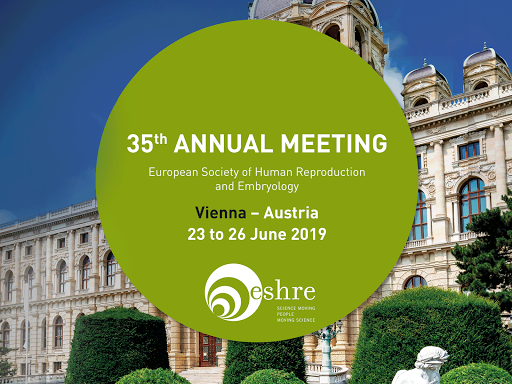Nine items of Instituto Bernabeu research work present at ESHRE, the leading European congress on fertility
11-06-2019

Leading experts worldwide in the field of infertility will gather in Vienna in June. The event is unmissable for Instituto Bernabeu since the clinic will play an active role and will make research work developed by the clinic public. The Instituto Bernabeu Group will participate in the European Society of Human Reproduction and Embryology (ESHRE) event which is one of the leading congresses in the world and the leading congress in Europe on science and reproductive medicine. Following a tough selection process, nine items of research work prepared by different departments at the clinic have been accepted by the scientific committee from amongst the hundreds of research papers that were presented. Clinical experience, the challenges faced day by day at the clinic and a keen interest in its patients’ cases were the driving forces behind the research. Two items of research will be presented at the ESHRE congress by the clinic’s researchers in oral presentation format.
The event will bring together the leading specialists from across the world and it will be held in Vienna between 23rd and 26th June. Specialists from Instituto Bernabeu will attend since the event is one of the most important ones on their schedule.
Reproduction issues affect 17% of couples who are in childbearing age and Spain is the leading country in Europe in terms of reproductive medicine. The Instituto Bernabeu clinics in Alicante, Madrid, Albacete, Cartagena Elche and Benidorm are witnesses to this fact. Overall, over half of the clinic’s patients are from a variety of overseas countries. So far, the clinic has dealt with patients from 67 different countries. The advanced age of women who are trying for a child for the first time is amongst the most significant factors associated with issues having children. Ova begin to decrease in quantity and quality from 35 years of age onwards and other reasons for issues include endometriosis, lesions in fallopian tubes, sexually transmitted diseases and chronic diseases such as diabetes, thyroid issues, asthma, depression, hormone disorders and so on.
Researchers from Instituto Bernabeu will give presentations at the congress on the following scientific research work: ‘The luteal phase of double ovarian stimulation treatment (DuoStim) provides higher oocyte and blastocyst yield in unselected infertile patients: a retrospective, same-patient, cohort study’ and ‘Does the trophectoderm biopsy technique, pulling or flicking, affect the diagnostic rate, mosaic rate or transferability rate displayed by the genetic analysis in PGT-A cycles?’.
Instituto Bernabeu has assessed the effects of double ovarian stimulation treatment (DuoStim). In their results, the doctors indicate that, in terms of obtaining oocytes, the yield is better during the luteal phase of dual ovarian stimulation treatment.
The other item of research work that the specialists will present at ESHRE covers the possible impact of trophectoderm biopsy techniques (the aim of which is to discover if there are aneuploidies or chromosomal abnormalities in the embryo) on diagnostic rates, transfer rates or the presence of mosaicism.
1. Oral The luteal phase of double ovarian stimulation treatment (DuoStim) provides higher oocyte and blastocyst yield in unselected infertile patients: a retrospective, same-patient, cohort study
D. Bodri, J.C. Castillo, B. Moliner, J. Ll. Aparicio, A. Fuentes, P. Cirillo, Á. Llaneza, J. Ten, A. Bernabeu, R. Bernabeu
2. Oral Does the trophectoderm biopsy technique, pulling or flicking, affects the diagnostic rate, mosaic rate or transferability rate displayed by the genetic analysis in PGT-A cycles?
L. Herrero, L. Cascales, JA. Ortiz, M. Aparicio, J. Ten, R. Bernabeu
3. Poster Does the oocyte vitrification affect the aneuploidy and mosaicism rate in the blastocysts?
Morales R., Lledó B., Ortiz JA, Lozano F., Guerrero J., Herrero L., Cascales L., Ll. Aparicio J., Bernabeu R.
4. Poster Embryoglue® as medium for embryo transfer: does it really improve the outcomes? A prospective randomized controlled trial
R. Sellers, J.Ten, A. Rodríguez, J. Guerrero, JA. Ortiz, B. Moliner, R. Bernabeu
5. Poster Exploring outcomes with the use exogenous progesterone to replace the use of an antagonist in egg-donation cycles.
Authors
J. Guerrero; J. Castillo; R. Delgado; B. Moliner; L. Luque; J. Ten; A. Fuentes; A. Herencia; D. Bodri; P. Cirillo; A. Bernabéu; J. Ll. Aparicio; R. Bernabeu
6. Poster Initiation of ovarian stimulation independent of the menstrual cycle (random-start) in an egg donor program: a one-year single center experience.
J.Castillo, J.Guerrero, R. Delgado, B. Moliner, L. Luque, J. Ten, A. Fuentes, A. Herencia, D. Bodri, P. Cirillo, A. Bernabeu, J. Ll. Aparicio, R. Bernabeu
7. Poster Knowledge in Reproductive Health and degree of acceptance of Assisted Reproduction Techniques in students of the University of Castilla – La Mancha
MJ. M-De la Rosa, G. Blázquez-Abellán, JA. Ortiz, L. Luque, R. Bernabeu, I. Ochando
8. Poster Sperm freezing in 0.25 ml straws. Protocol optimization
Belmonte, MR. Fernandez-Santos, I. Ochando, J.Bartolomé-García, PJ. Soria-Meneses, R. Bernabeu, JJ. Garde.
9. Poster The greater the number of oocytes, the worse the embryo quality in young donors
N. Ruiz, I. Ochando, J. Ten, J.A. Ortiz, L. Luque, M.A. López, R. Bernabeu
